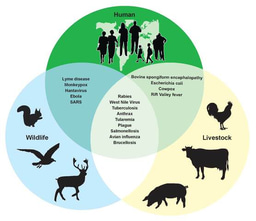On day 1 of the Lindau Meeting, art and science collided in more than one way… here’s what I got up to.
First port of call was the Inselhalle on the island of Lindau (which is connected to the mainland by road and rail). The island is a pleasant 20-30 minute walk from our hotels on the mainland, or just a few minutes drive in the space-age VW van we have been kindly given for the duration of the meeting. It has a few thousand miles on the clock but has a genuine new car smell – so much so, I though it was brand new.
Anyway the morning began in a packed lecture hall and the first Laureate to speak was the 2007 Nobel Prize recipient, Gerhard Ertl. So, the conference kicked off with some hardcore catalysis – the kind that takes place on solid surfaces. We were treated to some pretty patterns associated with complex reactions – such as the BZ reaction.
Art featured much more heavily in the second lecture of the day, which was delivered by the 1991 awardee, Richard Ernst. He told us that there is much beyond traditional science, such as arts and humanities and that we should have ‘passions’ outside of science to make us more complete individuals. His lecture ranged from the cultural history of central Asia – including, in particular, Tibetan art, of which he is a collector – to science education for monks and nuns in south India: ‘Science meets Dharma’. Ernst talked us through some fascinating pieces of art – and then moved on to art restoration and chemical techniques for pigment analysis, nicely weaving together his interests in art and science.
The first session of the day was rounded out by Ryoji Noyori whose theme was very much that chemistry is the key to our future. The moral to his story was that while nature gives us many wonderful molecules, the synthetic chemist can make so many more, and as we develop newer and better methodology, we can make them selectively and efficiently. He ended by saying that education is key and that the young researchers at the meeting are crucial for our (chemical) future.
After the coffee break, the first two speakers were Sherwood Rowland and Paul Crutzen – co-recipients of the 1995 Nobel Prize (along with Mario Molina). If you ever had any doubts about anthropogenic climate change, then you need to listen to these eminent scientists speak. The first day was then rounded out by Hartmut Michel – who received the Nobel Prize in 1988 – telling us about cytochrome c oxidase.
That was it for lectures, but then in the afternoon I turned runner/boom operator for the film crew shooting the Nature videos. I went from Laureate chauffer – driving SIr Harry Kroto and his wife to the location of the filming – to ‘microphone stand’ – which my colleague Sam assures me is the technical term for a boom operator… – I think he might be winding me up…
Anyway, after a successful shoot, Prof. Kroto and his wife had a much smoother ride back to their hotel when someone else drove the VW van, and then finally the team got together for some well-deserved tex-mex as the sun slowly set. Discussions about filming for today ensued, and then we made our way back to our hotels to recharge for today – which you can find out about tomorrow! More then…
For other NPG blogging, check out the Climate Feedback blog and Olive’s post about the renewable energy panel discussion earlier today.
Stuart
Stuart Cantrill (Chief Editor, Nature Chemistry)





Please sign in or register for FREE
If you are a registered user on Research Communities by Springer Nature, please sign in